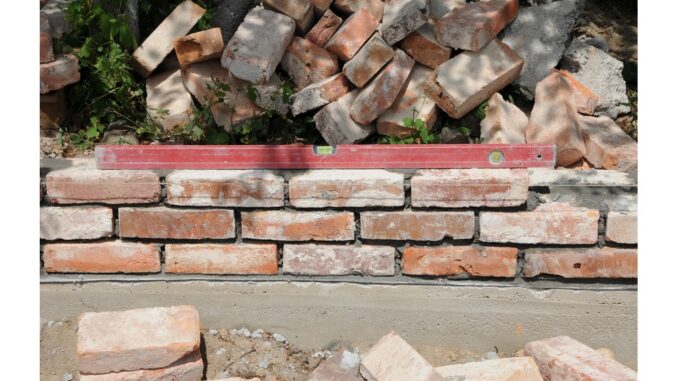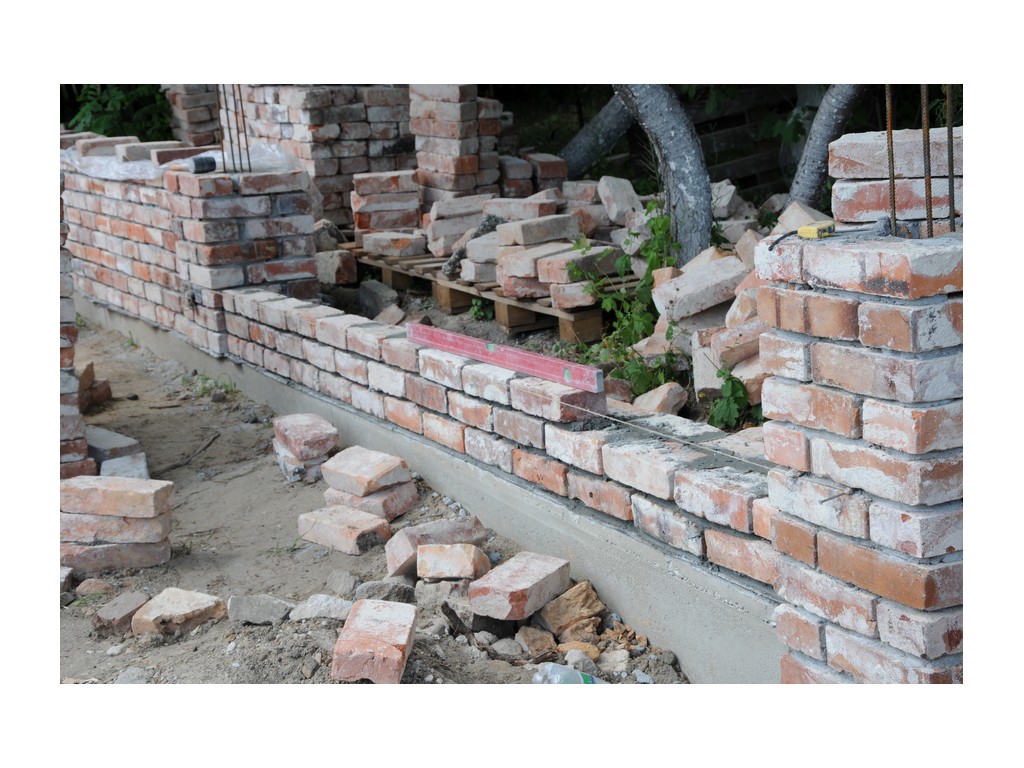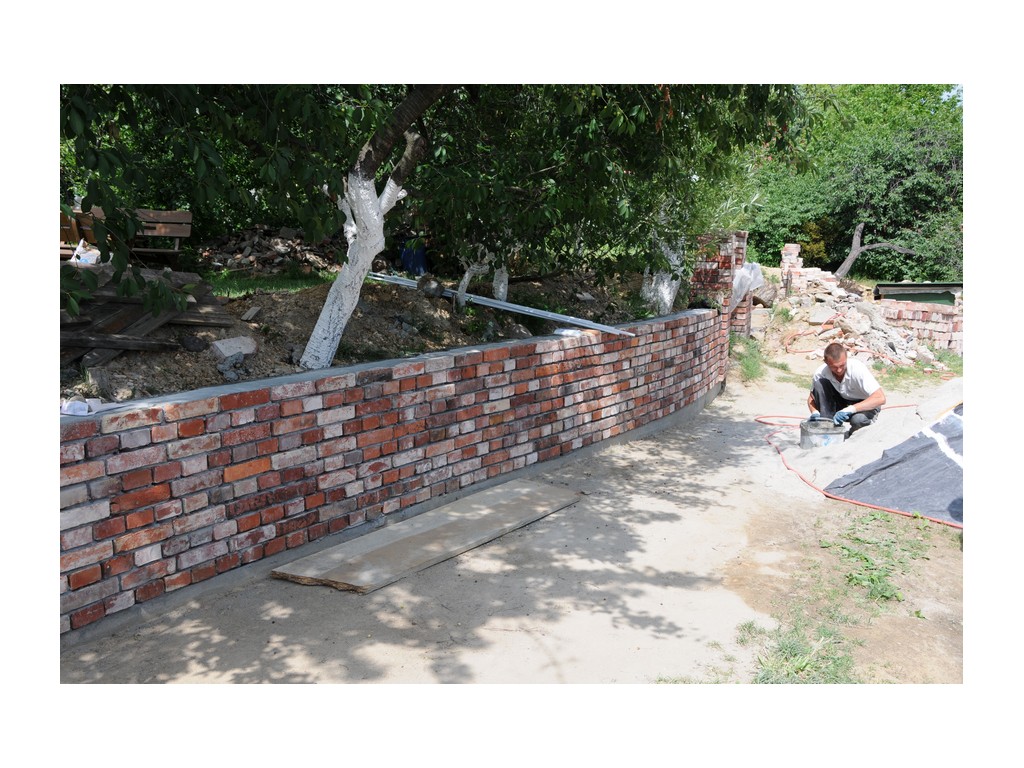
- Preparation: First, gather all necessary materials and tools. This includes bricks, lime mortar, a trowel, a spirit level, and a brick hammer. Lime mortar is typically made by mixing hydrated lime, sand, and water. The usual ratio is 1 part lime to 3 parts sand. Mix until you achieve a smooth, workable consistency.
- Laying the First Course: Start by laying a bed of mortar on the foundation where the bricks will be placed. Position the first brick, apply mortar to one end, and then position the next brick so that it’s touching the first. Use the trowel to remove any excess mortar.
- Checking for Level: Use the spirit level to check that the bricks are level both along the length and width. Adjust as necessary by tapping the bricks with the handle of the trowel.
- Continuing the Wall: Continue this process, building up the wall in layers. Remember to stagger the joints between courses (this is known as a “brick bond”) for added structural strength.
- Finishing: Once the wall has reached the desired height, finish by striking the mortar joints to ensure a tight seal and to improve the wall’s weather resistance.


Building a brick wall requires careful attention to detail. Here are some common mistakes to avoid:
- Inadequate Foundation: The foundation must be solid and capable of supporting the weight of the wall. If the foundation is weak, the wall may sink or collapse.
- Incorrect Mortar Mix: The mortar mix should not be too dry or too wet. A dry mix will not hold the bricks together, while a wet mix can cause the bricks to slide.
- Not Checking for Level: It’s important to regularly check that the bricks are level both horizontally and vertically. If the bricks are not level, the wall can lean or twist.
- Ignoring Bond Patterns: Bond patterns, like the common “running bond”, add structural integrity to the wall. Ignoring these can lead to a weaker wall.
- Poor Joint Finishing: Once the mortar has started to set, it should be ‘struck’ or ‘finished’ to ensure a tight seal and to improve the wall’s weather resistance. Ignoring this step can lead to water ingress and potential damage.
- Rushing the Process: Bricklaying is a skill that takes time to master. Rushing the process can lead to mistakes. It’s important to take the time to do the job correctly.
Remember, practice makes perfect. If you’re new to bricklaying, consider starting with a small project to hone your skills. Always prioritize safety and don’t hesitate to seek professional advice if you’re unsure. Happy building! 🧱